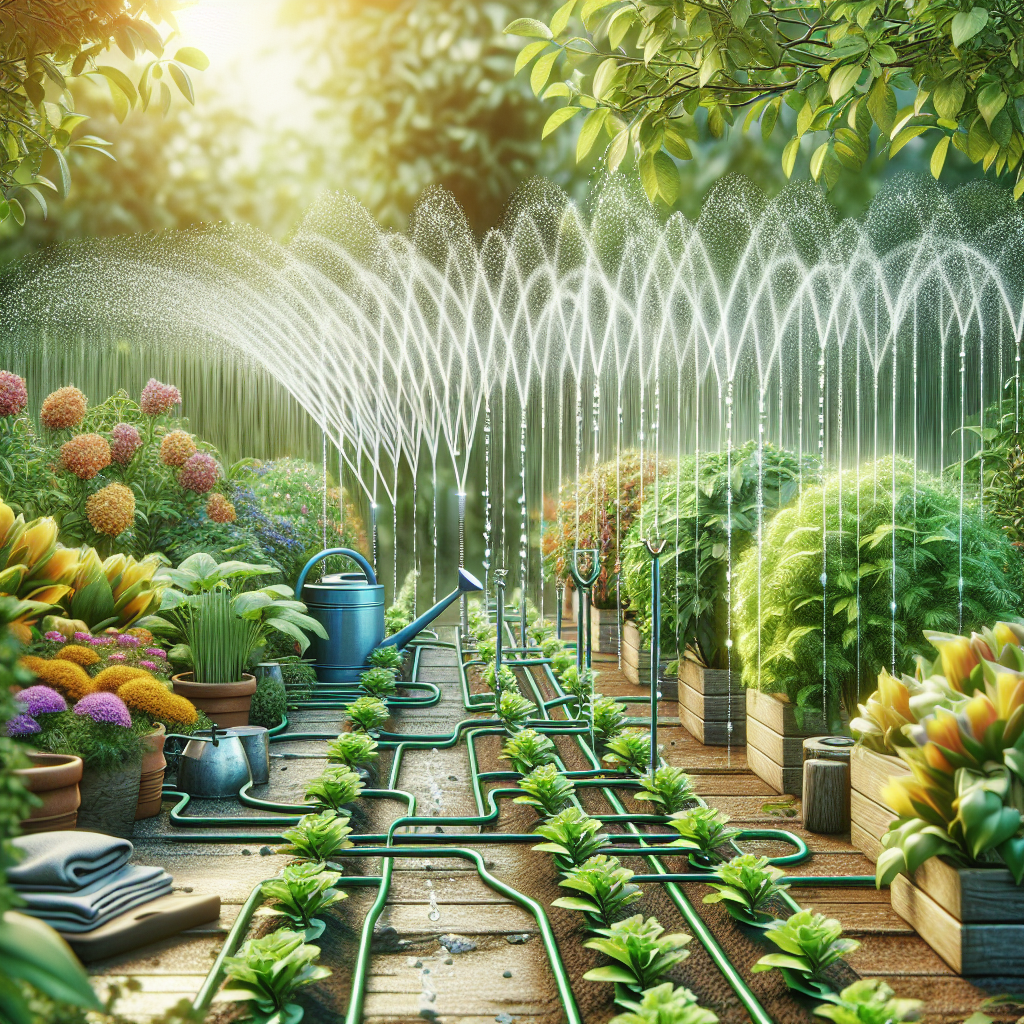Integrating Slow Drip Irrigation into Your Existing Garden Setup
Gardening can be a rewarding and fulfilling hobby, but it can also be time-consuming and labor-intensive. One way to make the gardening process easier and more efficient is by integrating slow drip irrigation into your existing garden setup. Slow drip irrigation is a method of watering plants that delivers water directly to the root zone at a slow and steady pace. This helps to minimize water waste and ensures that plants receive the right amount of water they need to thrive.
In this article, we will discuss the benefits of using slow drip irrigation in your garden, how to integrate it into your existing setup, and some tips for getting the most out of this watering method.
Benefits of Slow Drip Irrigation
There are several benefits to using slow drip irrigation in your garden. One of the main advantages is that it helps to conserve water. Traditional sprinkler systems can lead to significant water waste due to evaporation, runoff, and overspray. With slow drip irrigation, water is delivered directly to the root zone where it is needed most, minimizing waste and ensuring that plants receive the optimal amount of water.
Another benefit of slow drip irrigation is that it helps to prevent disease and fungus growth in plants. Traditional overhead watering methods can lead to excess moisture on plant leaves, which can create an environment conducive to fungal growth. Slow drip irrigation delivers water directly to the soil, keeping leaves dry and reducing the risk of disease.
Additionally, slow drip irrigation can help you save time and effort in your garden. Once you have set up a system, you can automate the watering process, freeing up time for other tasks in the garden. This can be particularly helpful during hot summer months when plants require frequent watering.
How to Integrate Slow Drip Irrigation Into Your Existing Setup
Integrating slow drip irrigation into your existing garden setup is relatively simple and can be done with just a few basic tools and materials. Here are some steps to follow:
1. Evaluate Your Garden Layout: Before installing a slow drip irrigation system, take some time to assess your garden layout. Determine where your plants are located and how much water each area requires. This will help you determine how many drip lines you will need and where they should be placed.
2. Choose Your Materials: There are several options available for slow drip irrigation systems, including soaker hoses, emitter tubing, or individual drippers. Choose a system that best fits your garden’s needs and budget.
3. Install Your System: Once you have chosen your materials, it’s time to install your slow drip irrigation system. Lay out your tubing or hoses along each row of plants, making sure they are positioned close enough to deliver water directly to the root zone.
4. Connect Your System: Connect your tubing or hoses to a timer or faucet adaptor for automated watering control. You may also want to consider adding a pressure regulator or filter if needed.
5. Test Your System: Before leaving your system unattended, test it out by running water through the lines for several minutes. Check for leaks or clogs and make any necessary adjustments before letting it run on its own.
Tips for Using Slow Drip Irrigation
Now that you have integrated slow drip irrigation into your existing garden setup, here are some tips for getting the most out of this watering method:
1. Monitor Soil Moisture: Even with a slow drip system in place, it’s essential to monitor soil moisture levels regularly. Check soil moisture with your finger or use a soil moisture meter if necessary.
2 . Adjust Watering Schedule: Depending on weather conditions and plant needs, adjust your watering schedule as needed throughout the growing season.
3 . Mulch Around Plants: To help retain moisture in the soil between watering sessions , add mulch around plants . Doing so will also help prevent weeds from growing .
4 . Clean System Regularly : To avoid clogging , clean emitters , hoses , or drippers annually before starting new growin g season .
5 . Winterize System : In colder climates , remove all components related t o t he d rip s ystem during winter months t o p revent damage from freezing temperatures .
In conclusion , integrating slow d rip irrigat ion into
your existing garde n setup ca n b e a great way
to save time , wate r , an d energ y while promoting healthy
growt h i n yo ur plant s . By following th e above gu idelines ,
you ca n establish an efficient irrigatio n syste m tha
benefit s bot h yo ur garde n an d th e environment .
Happ y gardening !














